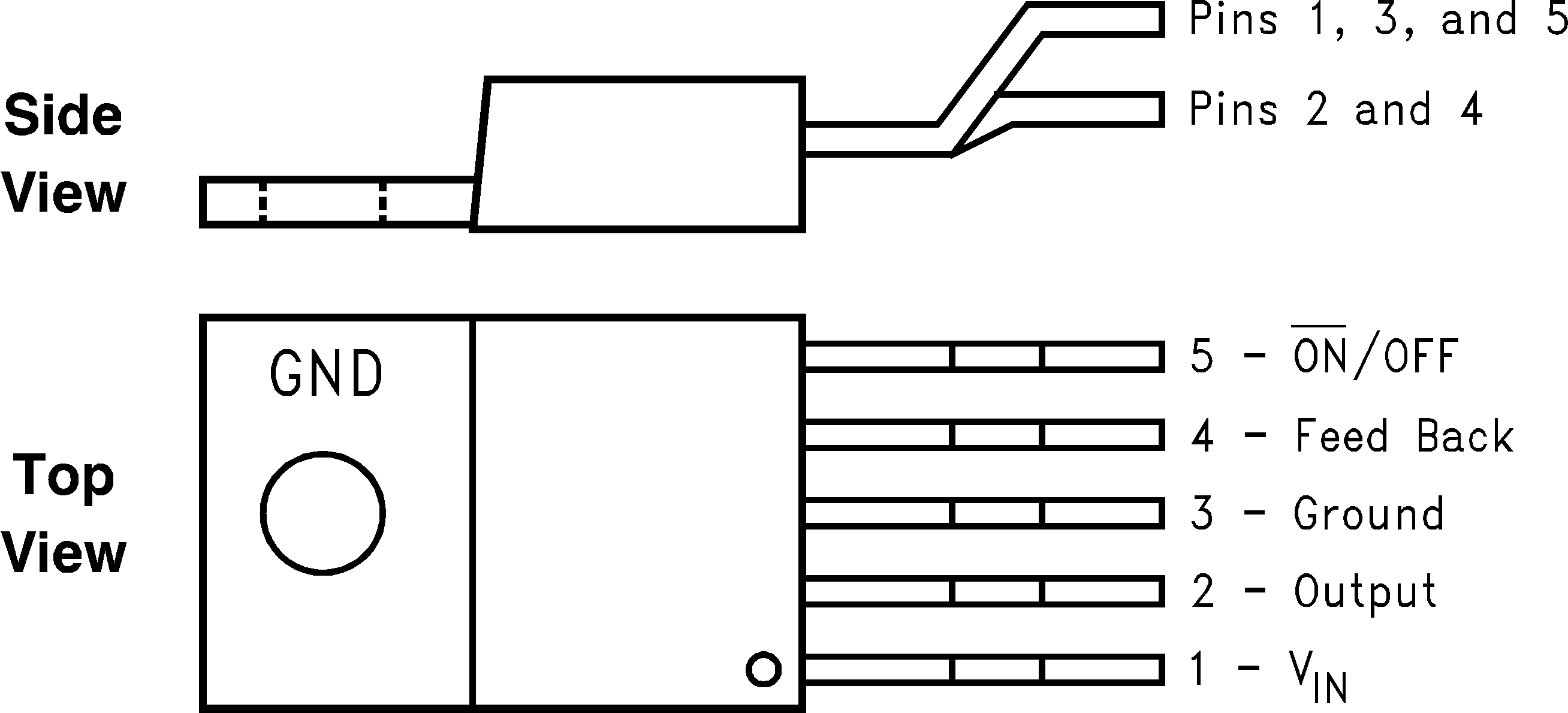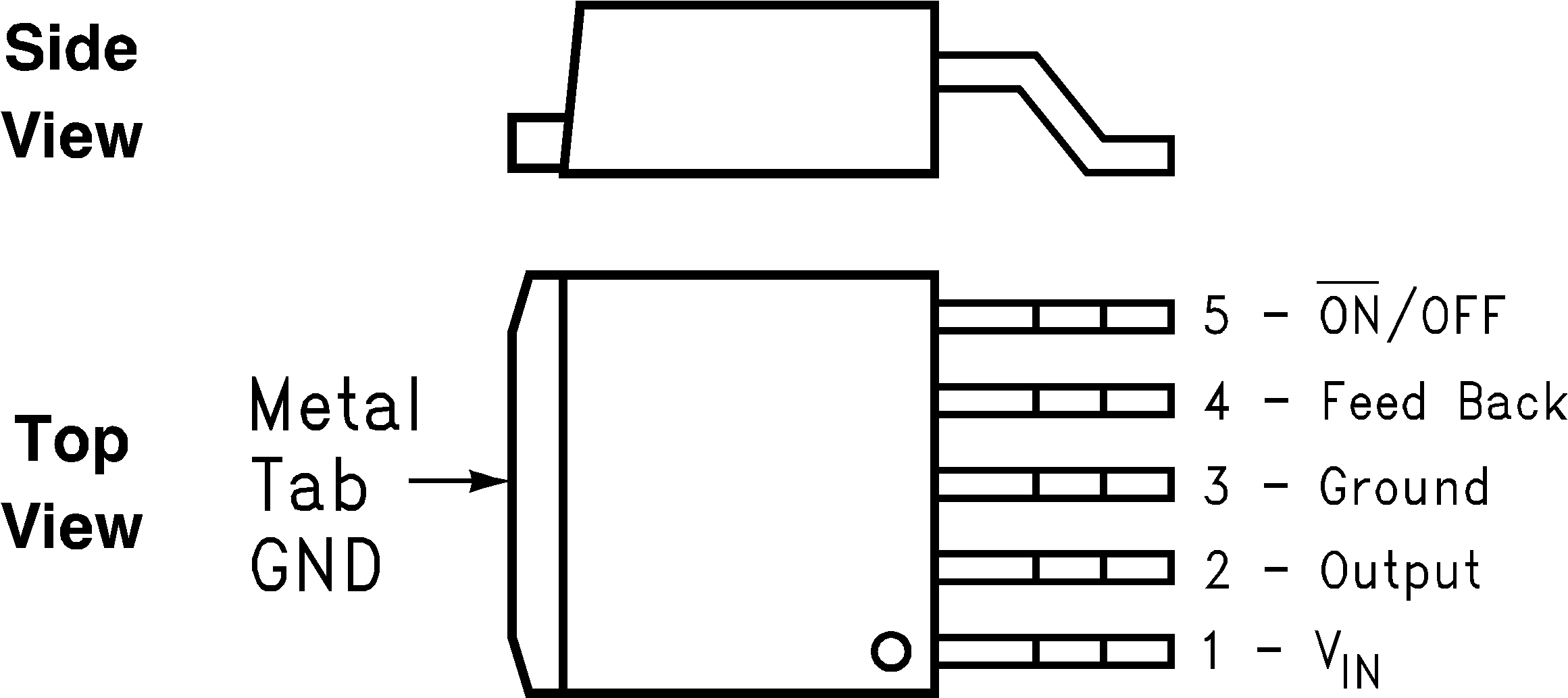SNVS124G November 1999 – March 2023 LM2596
PRODUCTION DATA
- 1 Features
- 2 Applications
- 3 Description
- 4 Revision History
- 5 Description (continued)
- 6 Pin Configuration and Functions
-
7 Specifications
- 7.1 Absolute Maximum Ratings
- 7.2 ESD Ratings
- 7.3 Operating Conditions
- 7.4 Thermal Information
- 7.5 Electrical Characteristics – 3.3-V Version
- 7.6 Electrical Characteristics – 5-V Version
- 7.7 Electrical Characteristics – 12-V Version
- 7.8 Electrical Characteristics – Adjustable Voltage Version
- 7.9 Electrical Characteristics – All Output Voltage Versions
- 7.10 Typical Characteristics
- 8 Detailed Description
- 9 Application and Implementation
- 10Device and Documentation Support
- 11Mechanical, Packaging, and Orderable Information
Package Options
Refer to the PDF data sheet for device specific package drawings
Mechanical Data (Package|Pins)
- NDH|5
- NEB|5
- KTT|5
Thermal pad, mechanical data (Package|Pins)
- KTT|5
Orderable Information
6 Pin Configuration and Functions
 Figure 6-1 5-Pin TO-220NDH PackageTop View
Figure 6-1 5-Pin TO-220NDH PackageTop View Figure 6-2 5-Pin TO-263KTT PackageTop View
Figure 6-2 5-Pin TO-263KTT PackageTop ViewTable 6-1 Pin Functions
| PIN | I/O | DESCRIPTION | |
|---|---|---|---|
| NO. | NAME | ||
| 1 | VIN | I | This is the positive input supply for the IC switching regulator. A suitable input bypass capacitor must be present at this pin to minimize voltage transients and to supply the switching currents required by the regulator. |
| 2 | Output | O | Internal switch. The voltage at this pin switches between approximately (+VIN − VSAT) and approximately −0.5 V, with a duty cycle of VOUT / VIN. To minimize coupling to sensitive circuitry, the PCB copper area connected to this pin must be kept to a minimum. |
| 3 | Ground | — | Circuit ground |
| 4 | Feedback | I | Senses the regulated output voltage to complete the feedback loop. |
| 5 | ON/OFF | I | Allows the switching regulator circuit to be shut down using logic signals thus dropping the total input supply current to approximately 80 µA. Pulling this pin below a threshold voltage of approximately 1.3 V turns the regulator on, and pulling this pin above 1.3 V (up to a maximum of 25 V) shuts the regulator down. If this shutdown feature is not required, the ON/OFF pin can be wired to the ground pin or it can be left open. In either case, the regulator will be in the ON condition. |